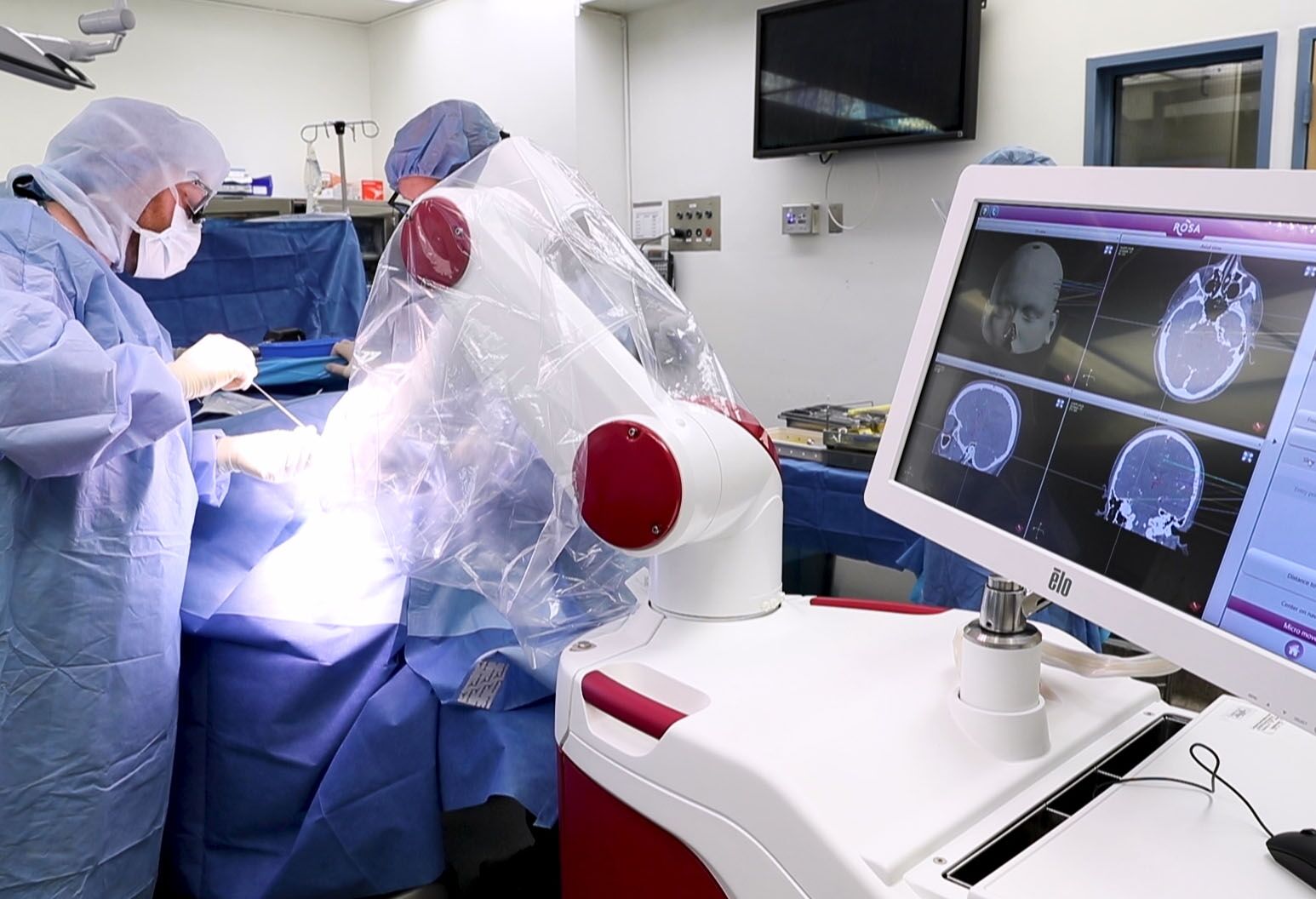ROSA®
We're the first on Long Island to use ROSA, an innovative new tool
When a young person has epilepsy, it's crucial to get their seizures under control because they can affect their safety, quality of life and even their cognitive development over time. For many pediatric epilepsy patients, medication or diet can control or eliminate seizures. For others, surgical intervention may be necessary. Cohen Children's neurosurgeons are experts in epilepsy surgery, and we're continuously advancing our field. We have recently secured a new robotic operating surgical assistant called ROSA, which will make epilepsy and other pediatric neurosurgery procedures more precise and safe. We're proud to be the first on Long Island to use this innovative technology.
How can ROSA be used?
Using ROSA, the surgeon is able to plan the surgery in advance based on presurgical images, and perform the procedure through small holes in the skull. This is much less invasive than the traditional approach of removing a portion of the skull to create access to the patient’s brain. ROSA may be used to support many neurosurgical procedures, including stereoelectroencephalography (SEEG), thermal ablation of seizure foci or tumors, deep brain stimulation (DBS) and surgical treatment of movement disorders. In addition to SEEG, ROSA can be used for a variety of minimally invasive neurological procedures, including laser ablation, responsive neurostimulation (RNS) electrode placement, deep brain stimulation, biopsy and endoscopy.
How does ROSA work?
ROSA consists of a powerful navigation system and a robot arm that provides exceptional dexterity and control of movement. It includes surgical planning software that allows surgeons to download preoperative imaging scans and create accurate 3D maps of the brain. Once the patient is in the operating room, the ROSA markerless registration process uses a laser sensor to scan the patient’s anatomy and match the data to the preoperative images. During the procedure, the ROSA robotic arm can be fitted with various instruments and guided to precise points in the brain. The arm moves smoothly and efficiently, enhancing the surgeon’s ability to perform complex maneuvers with complete control.
What is SEEG with ROSA?
Electroencephalogram (EEG) records the brain’s electrical activity and provides useful information about the location and type of epileptic activity. Stereoelectroencephalography (SEEG) is the minimally invasive surgical procedure used to map the seizure activity suspected of being the seizure focus area. The electrodes are placed through tiny holes drilled in the skull without the need for a craniotomy, which usually requires removing a larger area of skull bone. Using the paths created and guided by the ROSA robot, the surgeon is able to accurately place the electrodes in the desired areas of the brain to determine seizure focal points.
What are the benefits of using ROSA to perform brain surgery?
- Provides patient with minimally invasive procedure options
- Increases access to the surgical area due to the robotic arm that mimics human arm movements
- Provides precise instrument guidance through the robot arm’s high dexterity
- Reduces operating time due to increased efficiencies, particularly with placement of multiple electrodes for SEEG
- Eliminates need to remove a portion of the skull


